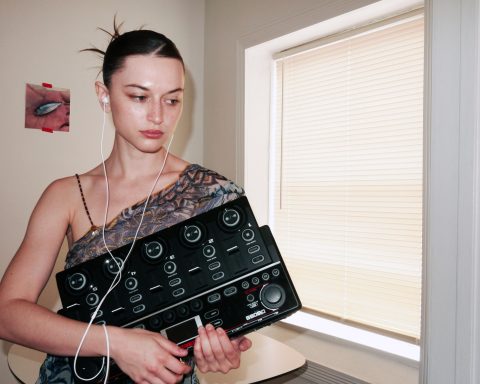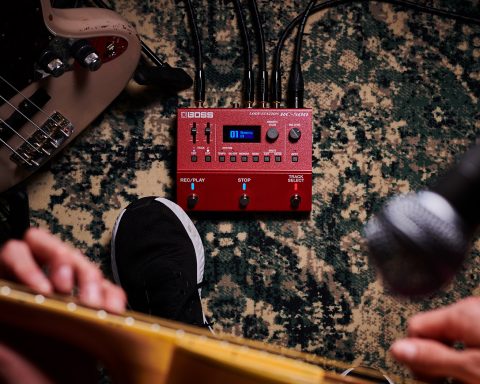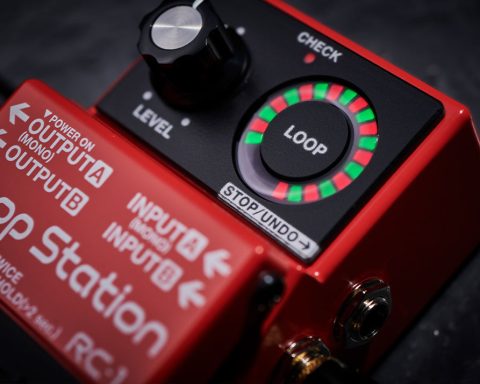Johnny A. has carved an extraordinary path in the world of guitar, establishing a career that spans decades and honors the timeless art of musicianship. Known for his technical prowess and signature sound, Johnny has captured the respect and admiration of fellow guitarists and fans alike. Grammy-nominated and celebrated worldwide, he’s performed, recorded, or toured with icons like B.B. King, Buddy Guy, and Jeff Beck. His impressive solo work, including the hit record Sometime Tuesday Morning, further cemented his reputation as a guitar virtuoso, leading to signature models with Gibson, Epiphone, and Fender. The guitar master shares how the RC-600 Loop Station helps him craft his legendary live show.
A Symphony Orchestrator
Guitar hero Steve Vai once described Johnny A. as “like a symphony orchestrator,” capturing his gift for crafting breathtaking compositions with the electric guitar. While Johnny may not be a household name, his influence and creative approach resonate deeply across the music community. From his early days with Boston-based band The Streets to his tenure with the legendary Yardbirds, Johnny A. has continued to excel as a performer. His dedication to musical excellence and artistic vision have solidified his place as a compelling figure in guitar history.
Currently, Johnny A. tours across the United States solo with the BOSS RC-600 Loop Station. The RC-600’s powerful looping capabilities are key to his solo shows, enabling him to perform crowd-pleasing songs from artists like The Beatles and Jeff Beck as an instrumentalist. The RC-600 has also allowed him to tour sustainably without the expense of a full band. As he puts it, “I would probably be out of business as far as being a touring musician goes if I didn’t have the ability to perform solo with my BOSS RC-600 Loop Station.”
BOSS caught up with Johnny to explore why the RC-600 Loop Station is vital to his music career. He also offers valuable insights on how other musicians can harness this flagship looper to enhance their own performances.
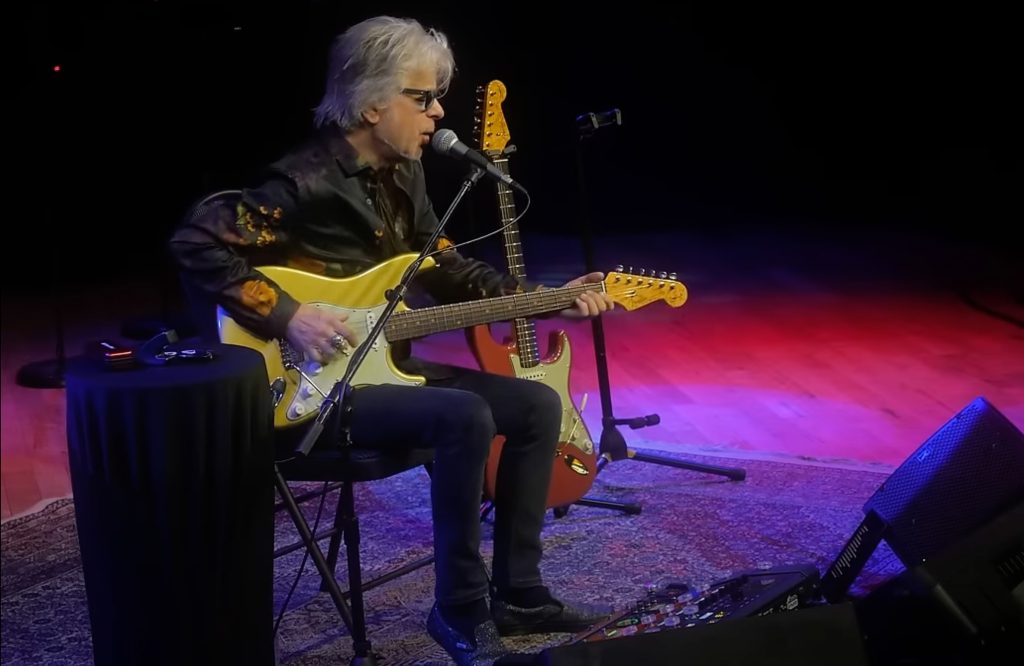
"When I looked at the RC-600, I realized it was exactly what I needed. It’s proven to be great. It’s essential to me now."
Going the Full Loop
What first inspired you to use the BOSS RC-600 loop station in your performances, and how did it impact your live setup?
Before the BOSS RC-600 Loop Station, I used two other loopers from a different brand, but they didn’t have the functionality that allowed me to loop the way I wanted and create song structures. I’ve always been more of a song guy, so I wanted to do things with multiple sections: verse, chorus, bridge, end section, et cetera.
Also, my old loopers started to crap out on me during gigs. So, I started looking around for an alternative. This was around the time that the RC-600 was released. I had some friends who were using BOSS Loop Stations, and one of them was using the RC-500. He told me it had given him bulletproof performances, so I checked it out. The feature set wasn’t quite what I needed, but when I looked at the RC-600, I realized it was exactly what I needed. It’s proven to be great. It’s essential to me now.

Can you walk us through your live looping process? How do you typically build a song from start to finish using the RC-600?
I have the RC-600 inserted into the effect loop of a Fractal FM9, which is what I use for my basic guitar sounds and effects. I use the RC-600 for percussion and rhythms, and how I build my loops is totally song-dependent.
Not everything in my show features the RC-600 prominently. Some of it is more like solo guitar, where I’ll use the RC-600 to create a loop for vamping and soloing over. But for a lot of songs, I use the RC-600 to create multiple layers using loops, along with rhythms. I might start off with a rhythm and bass thing. I’ll often loop the chorus first as a rhythm section part and then approach the verse second. That way, when I come back to the chorus, the bed is already there for me to play the melody over.
Articulation and Presentation
How has the RC-600 allowed you to push the boundaries of what’s possible in a solo performance? Do you feel like it gives you greater creative freedom on stage?
Most definitely. It’s a stereo looper with stereo panning, so I can pan my loops wherever I want. It gives me much greater articulation and presentation through the front of house. The RC-600 allows me to do that and pre-mix how those loops are going to sit in the final production of the performance. That’s opened up a lot, creatively speaking. It’s made my solo show more panoramic. It’s added much more production value and much more depth.
What’s your approach to balancing the mix of loops in your music, and how do you decide what elements to loop and what to play live?
I almost always play the melodies and solos live. How loud a loop is, the tone, or where it’s positioned in the stereo field is based on my past work in the recording studio as a producer and mixing engineer. It’s a question of which parts I want to be prominent and which parts I want to be further back in the mix. When building loops, I’m always changing things up tone-wise and effects-wise. And whether it’s a clean, dirty, tremolo, octave, flanger, or rotary sound, I’m always conscious of how that impacts the overall presentation.
"The RC-600 has made my solo show more panoramic. It’s added much more production value and much more depth."

Structure Meets Technique
The RC-600 has tons of effects and control features. Are there any functions you use to create your unique sound?
I use the RC-600 for rhythms on certain songs, backward effects, and fades. I also like to simultaneously stop loops and bring them all back together. I’m sure I only scratch the surface of the RC-600, but it really does what I need it to do for my solo performances. I’m sure I’ll get more musical ideas from it over time, but it’s working exactly how I need it to work right now.
Do you have any go-to loop structures or techniques you rely on? How does the RC-600 allow you to evolve a song live?
Some songs have only got one loop in them while others have got half a dozen. To begin with, I’ll think of a song and then figure out if it’s possible for me to pull it off in a solo situation. I’m sure you could somehow make every song fit into a looping situation, but I want it to feel natural. I don’t want it to take two or three minutes to set up before you get into the song. I like to structure the pieces in the spirit of pop music from the ’60s and ’70s.
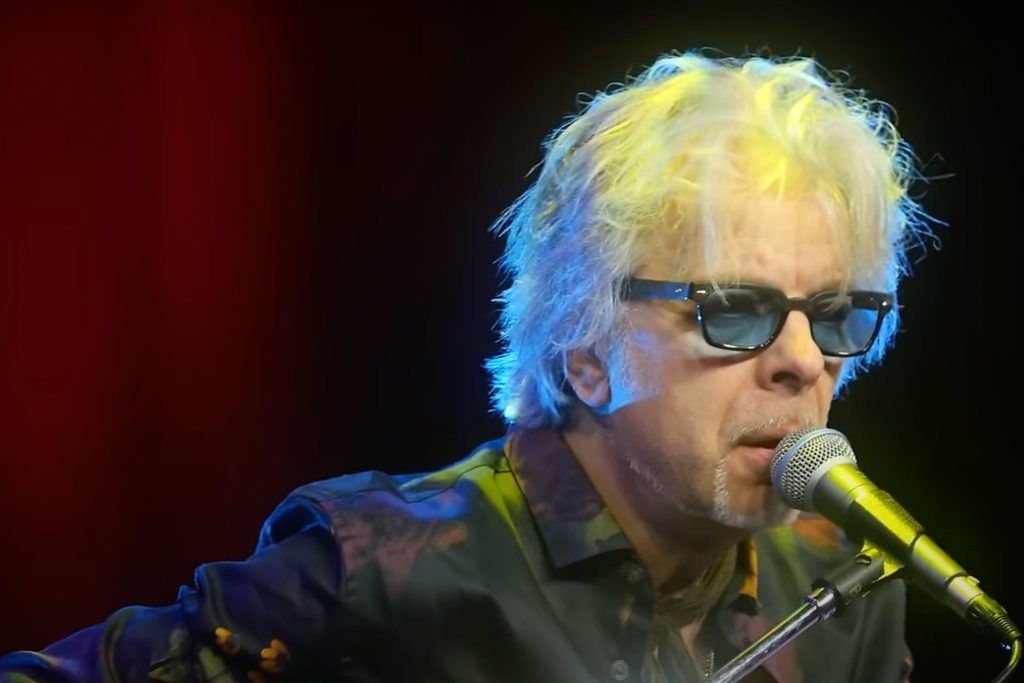
Tales of a Tone Freak
What challenges have you encountered using the RC-600 live, and how have you adapted or overcome them?
I never use tube amps in my solo shows. I always use a modeler. The good thing about tube amps is the compression. That’s wonderful when you’re playing in a band because you get that wonderful sustain and bloom. But the thing that’s good about tube amps is the very same thing that is a problem when using them for multiple layers of guitar loops, bass, and percussion: the compression. The more loops you add, the sound naturally crunches down and gets smaller, as opposed to bigger and more articulate.
"I’m sure I only scratch the surface of the RC-600, but it really does what I need it to do for my solo performances."
How important are specifications like sampling frequency, AD/DA conversion, and processing power to you?
I’m a tone freak, so it’s all really important to me. The overall sound quality of the unit is crucial. I’m always listening out for the noise floor and artifacts in the loop. The audience doesn’t care what the bit rate is. But the musicians know that all of this makes a big difference to the quality of their performance.
Practice, Perseverance, and Patience
Live looping demands a high level of timing and coordination. What has helped you perfect your timing and transitions?
It was much more difficult with the model I used previously because it didn’t have any rhythm function. The RC-600 has great rhythm capabilities. So, now I can build up the songs with percussion (shakers, congas, and that sort of thing) to give the performance more movement and energy.
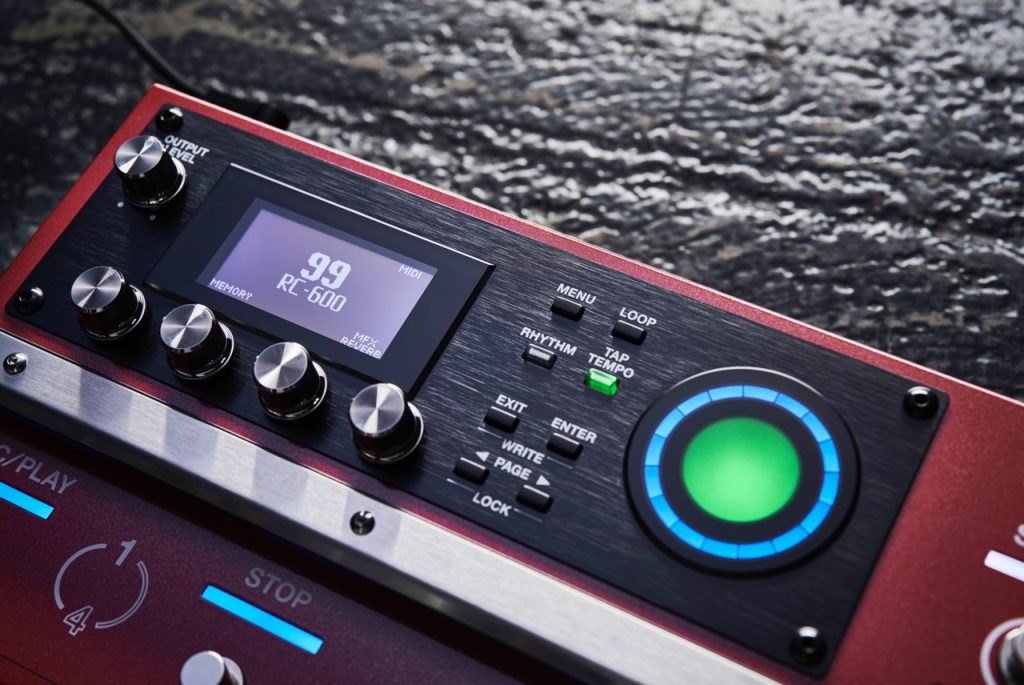
Also, you can set loops up to automatically come in on the first beat of the bar. It’s a bit like using automatic punch-ins in the studio. You can set it up so that the loop comes in perfectly on time by itself. That’s a really helpful function.
What’s been the audience reaction to your live looping?
This is my fifth year of touring as a solo artist using loops to perform with, and I get great reactions. My show is based on songs. I was brought up listening to music from the late 50s, so it was never jam-based. It was all about the song. I tend to pick songs with different keys and tempos to make the setlist more dynamic. I’ve also started adding vocals to my performances, but only on about three or four songs so far. Some songs have minimal looping, while others have lots of looping. I like to keep it varied, which helps the audience enjoy it.
"The RC-600 has great rhythm capabilities."
Finally, what advice would you give other musicians interested in starting out with live looping?
Practice, perseverance, and patience! When I first got into looping, it was out of necessity. Once I figured out how to put a show together using a looper, I rehearsed it for six or seven hours a day for months before I did a gig. Fortunately, the RC-600 Loop Station has made it a lot easier.
The loopers I was using previously were much more difficult to get my head around. They were also unreliable, and the functionality was far more restricted. But the BOSS RC-600 is so reliable that I don’t even take a spare on tour. It’s totally solid!
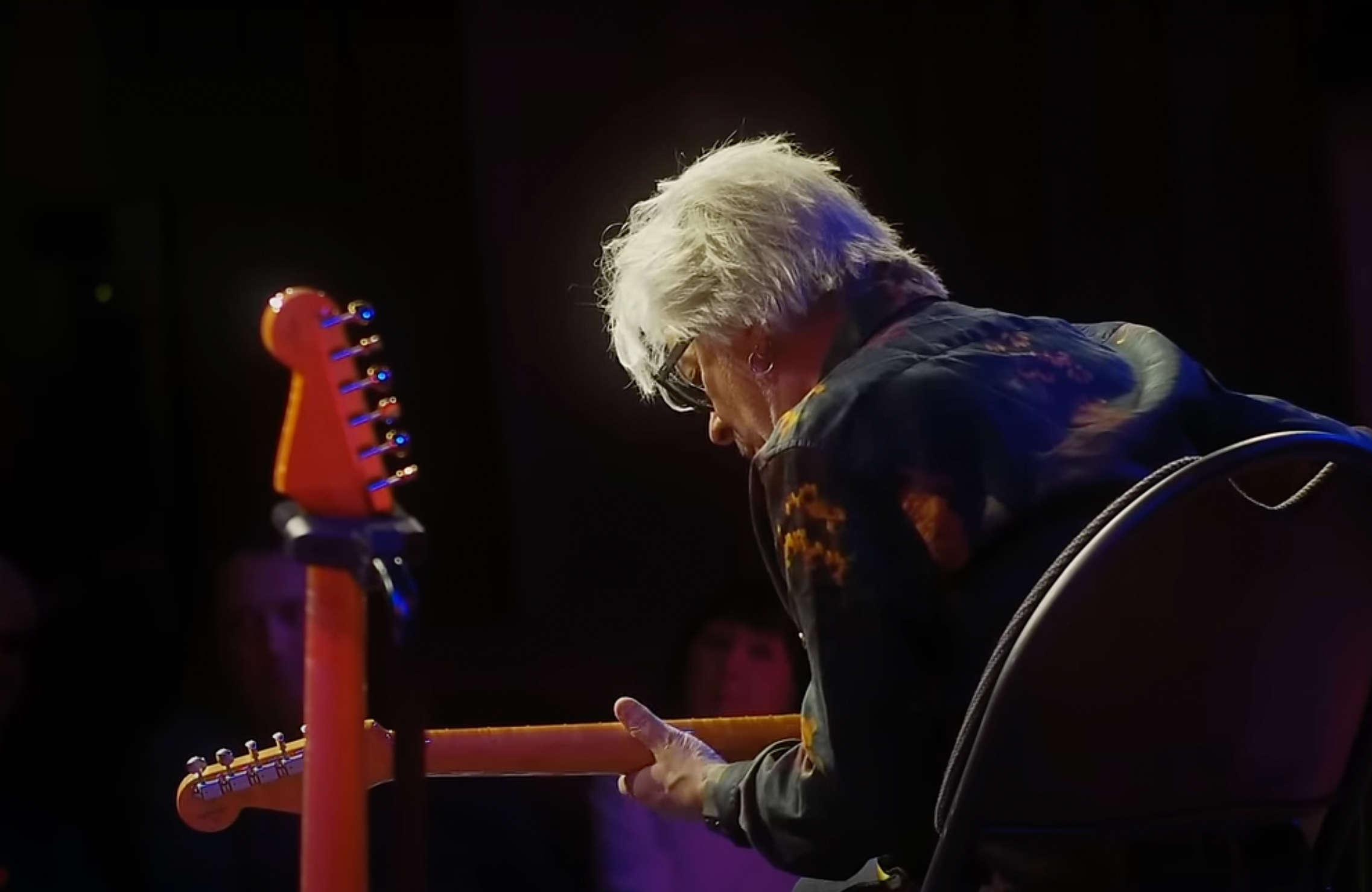
Johnny A. has released three acclaimed studio albums—Sometime Tuesday Morning, Get Inside, and Driven—as well as the live album and concert film One November Night. His new single, a cover of The Beatles’ classic “You’ve Got to Hide Your Love Away,” is available now, with all proceeds going to support The Greater Boston Food Bank.
For more information, visit the Johnny A. website.


